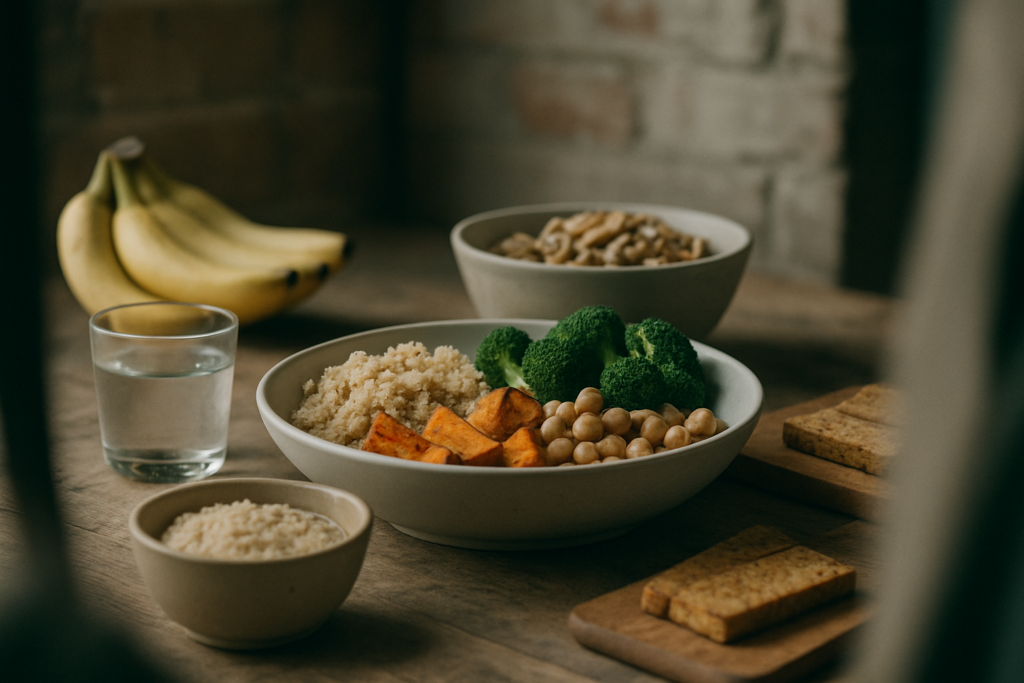Understanding the Importance of Hydration in Long-Distance Running
Proper hydration directly impacts performance and overall health during long-distance runs. Adequate fluid intake is crucial for energy, endurance, and muscle function.
The Science of Hydration and Performance
Hydration maintains electrolyte balance, which is vital for muscle contractions and nerve function. When running, the body loses fluids through sweat, and these fluids must be replenished to avoid fatigue and cramps.
A 2% drop in body weight due to dehydration can impair physical performance. Drinking fluids consistently during runs ensures sustained blood plasma levels, which enhances oxygen delivery to muscles.
Risks of Dehydration for Runners
Dehydration leads to:
- heat exhaustion
- muscle cramps
- decreased coordination
Severe dehydration can cause heatstroke, a life-threatening condition.
Runners may also experience increased heart rates, which diminish endurance and overall performance. Monitoring urine color and sweating patterns helps manage hydration levels. Clear urine typically indicates good hydration, while dark urine suggests dehydration.
Essential Hydration Hacks for Long Runs
Runners need effective strategies to stay hydrated during long-distance runs. Here are some optimized techniques to help you maintain proper hydration.
Planning Your Hydration Strategy
Create a personalized hydration plan based on your unique needs.
- Calculate your sweat rate by weighing yourself before and after a run. This helps determine how much liquid you lose per hour. Aim to replace 75-100% of lost fluids during your run.
- Use electrolytes to maintain balance.
- Drink sports drinks containing sodium, potassium, and magnesium for runs longer than 60 minutes. These drinks help replenish what you lose through sweat.
- Schedule regular hydration breaks. Plan to drink every 15-20 minutes during your run. This prevents severe dehydration and keeps your energy levels steady.
Techniques for Efficient Water Intake

Practice carrying water. Use handheld water bottles, hydration belts, or vests. These options give you easy access to fluids while running.
Opt for small, frequent sips over large amounts at once. This improves absorption and reduces the risk of stomach discomfort. Aim for around 4-6 ounces every 15 minutes.
Consider drinking to thirst. While planning is essential, listening to your body can also guide when and how much to drink. If you feel thirsty, take a sip of water to stay ahead of dehydration.
Choose the right temperatures. Cool water is typically more palatable and gets absorbed faster. Avoid ice-cold water if it’s hot outside, as it might cause stomach cramps.
Experiment with different hydration methods during training. Find what works best for you before race day to ensure a comfortable and effective hydration strategy.
Choosing the Right Hydration Gear
Selecting the right hydration gear ensures you stay hydrated during long runs. It’s essential to find a system that matches your specific needs and preferences.
Hydration Packs vs. Handheld Bottles
Hydration packs and handheld bottles offer different advantages. Hydration packs can hold large amounts of water, useful for runs over 10 miles. They distribute weight evenly on your back, reducing strain on your arms.
Handheld bottles, like those with ergonomic grips, offer quicker access to water, making them suitable for shorter distances. They’re lightweight and easy to carry, but they may cause arm fatigue over extended periods.
Evaluating Durability and Comfort
Hydration gear must be durable and comfortable to support long runs. Sturdy materials, such as:
- BPA-free plastics
- high-density neoprene
- ensure longevity
Comfort features, like padded straps and adjustable belts in hydration packs, help avoid chafing and pressure points.
Handheld bottles with cushioned grips and anti-slip designs enhance comfort and usability. Always test your gear under different conditions to find the best fit for your running needs.
Hydration Before, During, and After Runs
Staying hydrated over long runs boosts endurance and health. Here are key strategies for pre-run, mid-run, and post-run hydration.
Pre-Run Hydration Tips
Hydrate adequately 24 hours before a run. Drink 16-20 ounces two hours before running. Consume a glass of water or a sports drink 15 minutes before starting. Include electrolytes like sodium and potassium, found in sports drinks and snacks, to prepare muscles.
Mid-Run Hydration Tactics
Base hydration needs on intensity and duration. Drink 4-6 ounces of fluids every 20 minutes during runs lasting over an hour. Use electrolyte tablets or gels to replace lost minerals.
Carry a handheld bottle or wear a hydration pack for easy access. Avoid waiting until thirsty; it’s a sign of early dehydration.
Recovering with Proper Post-Run Rehydration
Rehydrate within 30 minutes post-run. Drink at least 16-24 ounces of water or an electrolyte-rich drink. Include proteins and carbs to aid muscle recovery.
Monitor your urine color; it should be light yellow, indicating proper hydration. Continuing to sip water throughout the day helps maintain fluid balance.



